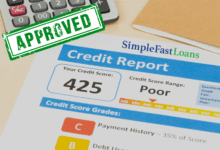Best Personal Loans: Your Guide to Smart Borrowing
Best personal loans offer a flexible financial tool for various needs, from debt consolidation to home improvements. Understanding the nuances of secured versus unsecured loans, interest rate calculations, and responsible borrowing practices is key to making informed decisions. This guide navigates the complexities of personal loans, empowering you to find the best fit for your financial situation and goals.
We’ll explore different loan types, factors influencing interest rates (including your credit score and debt-to-income ratio), and strategies for securing the most favorable offers. We’ll also cover practical aspects like managing repayments, budgeting effectively, and understanding the potential risks and rewards associated with personal loans. By the end, you’ll be equipped to confidently navigate the world of personal finance and make smart borrowing choices.
Understanding Personal Loan Types
Choosing the right personal loan requires understanding the different types available. This section will clarify the distinctions between secured and unsecured loans, explore various repayment terms, and illustrate common loan applications.
Secured vs. Unsecured Personal Loans
Secured personal loans require collateral, an asset you pledge to the lender as security. If you default on the loan, the lender can seize the collateral. Common collateral includes savings accounts, investments, or vehicles. Unsecured personal loans, conversely, do not require collateral. They rely solely on your creditworthiness for approval. Consequently, unsecured loans typically carry higher interest rates to compensate for the increased risk to the lender. The choice between a secured and unsecured loan depends on your financial situation and risk tolerance.
Personal Loan Repayment Terms
Personal loan repayment terms vary significantly, impacting your monthly payments and overall loan cost. Terms typically range from a few months to several years. Shorter repayment terms lead to higher monthly payments but lower overall interest paid. Longer terms result in lower monthly payments but significantly higher total interest charges. Careful consideration of your budget and financial goals is crucial when selecting a repayment term.
Common Uses for Personal Loans
Personal loans serve a variety of purposes. Debt consolidation is a popular use, allowing borrowers to combine multiple high-interest debts into a single, potentially lower-interest loan, simplifying repayment and potentially saving money on interest. Home improvement projects, such as renovations or repairs, are another frequent application. Medical expenses, often unexpected and substantial, can also be effectively managed through personal loans. Finally, financing a large purchase, such as a significant appliance or piece of equipment, is a viable use for a personal loan.
Interest Rates Across Loan Types
The interest rate you qualify for is determined by your credit score, income, and the type of loan. Lower credit scores typically lead to higher interest rates. Secured loans generally offer lower interest rates than unsecured loans due to the reduced risk for lenders.
| Loan Type | Interest Rate Range (Approximate) | Typical Repayment Term | Collateral Required |
|---|---|---|---|
| Secured Personal Loan | 6% – 18% | 12 – 60 months | Yes |
| Unsecured Personal Loan | 10% – 25% | 12 – 60 months | No |
| Debt Consolidation Loan | 7% – 20% | 24 – 72 months | May be secured or unsecured |
| Home Improvement Loan | 6% – 18% | 36 – 84 months | Often secured by the property |
Factors Affecting Interest Rates
Securing a personal loan involves understanding the factors that influence the interest rate you’ll pay. Lenders use a variety of metrics to assess your creditworthiness and determine the risk associated with lending you money. These factors directly impact the final interest rate, significantly affecting the overall cost of borrowing.
Lenders consider several key factors when determining personal loan interest rates. These factors work in concert to create a comprehensive risk profile for each borrower.
Credit Score’s Impact on Interest Rates
Your credit score is arguably the most significant factor influencing your interest rate. A higher credit score indicates a lower risk to the lender, as it suggests a history of responsible borrowing and repayment. Conversely, a lower credit score signals a higher risk, leading to a higher interest rate to compensate the lender for the increased chance of default. Credit bureaus, such as Experian, Equifax, and TransUnion, compile your credit history, and lenders use these reports to assess your creditworthiness. A strong credit history, reflected in a high credit score (generally above 700), typically qualifies you for lower interest rates, while a poor credit history (below 600) can result in significantly higher rates or even loan rejection.
Debt-to-Income Ratio and Loan Amount’s Influence
Your debt-to-income (DTI) ratio, which represents the percentage of your monthly income dedicated to debt payments, plays a crucial role in determining your interest rate. A high DTI ratio indicates that a substantial portion of your income is already committed to debt repayment, potentially leaving less room for additional loan payments. This increases the perceived risk for lenders, resulting in higher interest rates. Similarly, the loan amount itself can influence the interest rate. Larger loan amounts often come with higher interest rates because they represent a greater financial risk for the lender.
Loan Terms and Their Effect on Total Borrowing Cost
The loan term, or repayment period, also affects the total cost of borrowing. While a shorter loan term leads to higher monthly payments, it results in less interest paid over the life of the loan. Conversely, a longer loan term reduces monthly payments but increases the total interest paid. Borrowers need to carefully weigh the trade-offs between lower monthly payments and higher overall interest costs when choosing a loan term. For example, a 36-month loan will typically have a higher monthly payment but lower total interest compared to a 60-month loan for the same principal amount.
Hypothetical Scenario: Credit Score and Interest Rate Variation
Let’s consider a hypothetical scenario involving three borrowers applying for a $10,000 personal loan with identical loan terms (36 months).
| Borrower | Credit Score | Approximate Interest Rate | Estimated Monthly Payment | Total Interest Paid |
|---|---|---|---|---|
| Borrower A | 750 (Excellent) | 6% | $300 | $800 |
| Borrower B | 680 (Good) | 9% | $320 | $1150 |
| Borrower C | 600 (Fair) | 15% | $360 | $2150 |
This illustrates how a higher credit score significantly reduces the interest rate, resulting in lower monthly payments and substantially less interest paid over the loan’s lifetime. These are estimations and actual rates can vary depending on the lender and other factors.
Finding the Best Loan Offers
Securing the most advantageous personal loan requires a strategic approach. This involves careful comparison of offers from various lenders, understanding the application process, and recognizing the key distinctions between different lending institutions. By following a methodical process, you can significantly improve your chances of obtaining a loan with favorable terms.
Comparing Personal Loan Offers
Effective comparison hinges on a standardized evaluation process. Don’t just focus on the advertised interest rate; consider the total cost of the loan, including fees, and the overall repayment terms. Use online comparison tools to streamline this process. These tools often allow you to input your desired loan amount and term, then display a range of offers from different lenders, making it easy to identify the most competitive options. Consider factors such as APR (Annual Percentage Rate), origination fees, prepayment penalties, and any other associated charges. A lower APR isn’t always the best indicator; a slightly higher APR with fewer fees might ultimately be a more cost-effective option.
Applying for a Personal Loan: A Step-by-Step Guide
The application process typically involves several key steps. First, you’ll need to pre-qualify. This usually involves providing basic information like your income, credit score, and desired loan amount. This allows lenders to assess your eligibility without impacting your credit score. Next, you’ll formally apply, providing more detailed financial information. This often includes proof of income, employment history, and bank statements. The lender will then review your application and assess your creditworthiness. Once approved, you’ll receive loan documents to review and sign, and finally, the funds will be disbursed. The entire process can take anywhere from a few days to several weeks, depending on the lender and your individual circumstances.
Online Lenders versus Traditional Banks
Online lenders often offer a streamlined application process and potentially faster funding times. They may also be more flexible with their credit score requirements. However, they might lack the personalized customer service associated with traditional banks. Traditional banks, on the other hand, offer a more established and trustworthy reputation, along with in-person support. However, their application processes might be more rigorous, and funding times may be longer. The choice depends on your priorities: speed and convenience versus personalized service and established reputation.
Key Aspects to Consider When Choosing a Lender
Selecting a lender involves careful consideration of several crucial factors. Fees, including origination fees, late payment fees, and prepayment penalties, can significantly impact the overall cost of the loan. Customer service is also vital; readily available and responsive customer support can be invaluable during the loan process. Repayment options, such as the length of the loan term and the frequency of payments, should align with your budget and financial goals. Finally, examine the lender’s reputation and reviews to gauge their trustworthiness and customer satisfaction levels. Consider reading online reviews from other borrowers to get a sense of their experiences with the lender.
Managing Personal Loan Repayments
Successfully managing personal loan repayments requires careful planning and proactive budgeting. Failing to do so can lead to serious financial consequences, impacting your credit score and overall financial well-being. This section will outline effective budgeting strategies, the repercussions of missed payments, and available options for those facing repayment challenges.
Effective Budgeting Techniques for Loan Repayments
Creating a realistic budget is crucial for consistent loan repayments. This involves tracking your income and expenses to identify areas where you can save and allocate funds towards your loan. Consider using budgeting apps or spreadsheets to monitor your financial inflows and outflows. Prioritize essential expenses (housing, food, transportation) and allocate a specific amount each month towards your loan payment. This ensures that the repayment remains a top priority within your financial plan. Building a buffer for unexpected expenses is also wise, preventing loan payment defaults due to unforeseen circumstances.
Consequences of Missing Loan Payments
Missing loan payments triggers a cascade of negative consequences. Late payments result in late fees, increasing the overall cost of the loan. Repeated missed payments can severely damage your credit score, making it difficult to obtain future loans or credit cards at favorable rates. Lenders may also pursue collection actions, including contacting you repeatedly, potentially impacting your relationships and reputation. In severe cases, lenders may initiate legal action, potentially leading to wage garnishment or the seizure of assets.
Options for Borrowers Facing Financial Difficulties
If you anticipate difficulty making your loan payments, proactive communication with your lender is paramount. Many lenders offer hardship programs, such as temporary payment reductions or loan modifications, to assist borrowers facing temporary financial setbacks. Exploring options like debt consolidation or seeking financial counseling can also provide valuable guidance and support. Debt consolidation combines multiple debts into a single loan, potentially simplifying repayment and lowering interest rates. A financial counselor can provide personalized advice and strategies to help you manage your debt effectively and avoid further financial distress.
Sample Repayment Schedule
The following table illustrates a sample repayment schedule for a $10,000 personal loan at a 7% annual interest rate over 36 months. Note that this is a simplified example, and actual repayment schedules may vary based on loan terms and interest rates.
| Month | Beginning Balance | Payment | Interest | Principal | Ending Balance |
|---|---|---|---|---|---|
| 1 | $10,000.00 | $304.00 | $58.33 | $245.67 | $9,754.33 |
| 2 | $9,754.33 | $304.00 | $57.32 | $246.68 | $9,507.65 |
| 3 | $9,507.65 | $304.00 | $56.30 | $247.70 | $9,259.95 |
| … | … | … | … | … | … |
| 36 | $245.67 | $304.00 | $1.44 | $302.56 | $0.00 |
Potential Risks and Benefits
Personal loans can be a valuable financial tool when used responsibly, offering access to funds for various needs. However, like any form of borrowing, they carry inherent risks that require careful consideration. Understanding both the advantages and disadvantages is crucial for making informed decisions. This section will explore the potential benefits and risks associated with personal loans, highlighting responsible borrowing practices and providing examples of suitable and unsuitable applications.
Benefits of Personal Loans
Personal loans offer several advantages, primarily their accessibility and flexibility. They provide a lump sum of money that can be used for a wide range of purposes, from debt consolidation to home improvements or unexpected medical expenses. The fixed repayment schedule allows for budgeting and financial planning, providing predictability in monthly expenses. Furthermore, a good credit history, built through responsible repayment, can improve your credit score, opening doors to more favorable financial opportunities in the future. A lower interest rate than credit cards is also frequently a significant benefit.
Risks of Personal Loans
While personal loans offer financial flexibility, they also carry potential risks. The most significant risk is the accumulation of debt if the loan amount is not manageable within the borrower’s budget. High interest rates can lead to substantial costs over the loan’s term, especially if repayments are missed or delayed. This can negatively impact credit scores, making it more difficult to secure future loans or credit. Furthermore, the terms and conditions of the loan, including fees and penalties, need careful scrutiny to avoid unexpected financial burdens.
Responsible Borrowing Practices
Responsible borrowing involves careful planning and a realistic assessment of one’s financial capabilities. Before applying for a personal loan, it’s essential to compare interest rates and terms from multiple lenders to secure the most favorable offer. Creating a detailed budget that incorporates the monthly loan repayment is crucial to ensure affordability. Maintaining a healthy emergency fund can provide a safety net in case of unexpected financial difficulties. Regularly monitoring loan statements and proactively addressing any potential issues can prevent the accumulation of debt and negative impacts on credit scores.
Situations Where a Personal Loan May or May Not Be Suitable
A personal loan might be an appropriate choice for consolidating high-interest debts, financing major purchases like home renovations or medical expenses, or covering unexpected emergencies. For example, consolidating several credit card debts with high interest rates into a single personal loan with a lower interest rate can lead to significant savings over time. However, a personal loan may not be the best option for impulsive purchases or small, short-term expenses that can be managed through savings or a credit card with a manageable balance. For instance, financing a weekend getaway with a personal loan would likely be unwise due to the high interest costs relative to the purchase. Similarly, using a personal loan for non-essential items might exacerbate financial strain.
Illustrative Examples
Let’s examine some real-world scenarios to illustrate how personal loans can be used effectively and the financial implications involved. Understanding these examples will help you determine if a personal loan is the right financial tool for your specific needs.
Debt Consolidation with a Personal Loan
Sarah had accumulated high-interest debt on several credit cards, totaling $15,000 with an average APR of 18%. She was struggling to make minimum payments and saw little progress in reducing her debt. She secured a personal loan for $15,000 at a fixed APR of 9% over a 5-year term. This lower interest rate immediately reduced her monthly payments and allowed her to pay off her credit cards. By consolidating her debt, Sarah simplified her finances, improved her credit score over time (by paying down the loan consistently and on time), and saved significantly on interest payments over the life of the loan. The reduced monthly payment made her budget more manageable, alleviating financial stress.
Home Improvement Loan
John and Mary wanted to renovate their kitchen. The estimated cost of the renovation, including new cabinets, countertops, and appliances, was $20,000. They obtained a personal loan for $20,000 at a fixed APR of 7% over a 7-year term. Their monthly payments were manageable, fitting comfortably within their budget. The home improvements increased the value of their property and enhanced their quality of life. The loan allowed them to finance a significant improvement without depleting their savings.
Interest Accrual Visualization
Imagine a simple loan of $10,000 at 10% annual interest, repaid over 3 years.
Year 1: Interest accrued is $1000 (10% of $10,000). The principal remains at $10,000.
Year 2: Interest accrued is calculated on the remaining principal, leading to a slightly higher amount, reflecting compound interest. Let’s assume for simplicity that the principal is reduced by repayments to $8000 at the start of year 2. Interest accrued would be $800 (10% of $8000).
Year 3: Following the same pattern, the principal is further reduced. Let’s assume the principal is reduced to $6000 at the start of year 3. Interest accrued would be $600 (10% of $6000).
This simplified example illustrates how interest is calculated each year on the outstanding principal balance. The total interest paid over the three years would be $2400 ($1000 + $800 + $600), demonstrating that while the interest rate is fixed, the actual interest amount paid reduces each year as the principal is repaid. A more precise calculation would incorporate monthly payments and compounding effects, resulting in a slightly higher total interest paid.
Last Word
Securing the best personal loan involves careful planning and research. By understanding the various loan types, factors affecting interest rates, and responsible borrowing practices, you can significantly improve your chances of obtaining a loan that aligns with your financial capabilities and goals. Remember to compare offers from multiple lenders, consider fees and repayment terms, and always prioritize responsible financial management. Making informed decisions will lead to a positive borrowing experience and help you achieve your financial aspirations.





